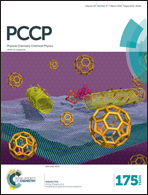The promotional effect of surface defects on the catalytic performance of supported nickel-based catalysts†
Abstract
Controlling the metal–support interactions, as well as the nature of support materials, is of vital importance for enhancing the catalytic performance of supported metal catalysts. In the present work, supported nickel nanocatalysts with abundant surface defects (e.g. oxygen vacancies, Ti3+ species) were directly synthesized via a facile single-source Ni–Ti layered double hydroxide precursor route, and their catalytic performance in the liquid phase selective hydrogenation of chloronitrobenzenes to chloroanilines was investigated. A series of characterization techniques including XRD, TEM, STEM, PL, XPS, H2–TPR and H2 chemisorption clearly demonstrated that the resultant Ni nanoparticles were uniformly dispersed on the surface of the Ni–Ti mixed metal oxide support formed in situ, thereby leading to strong metal–support interactions and the formation of a large amount of surface oxygen vacancies and Ti3+ species. Compared with that prepared using a conventional impregnation method, the as-formed Ni-based nanocatalysts exhibited significantly enhanced catalytic performance with a high chloroaniline yield of 99.0% under mild reaction conditions (i.e. a low hydrogen pressure of 0.2 MPa). Such an unprecedented catalytic efficiency was mainly attributed to the promotional effect of surface defects. Furthermore, the present Ni-based nanocatalysts could be reused five times without serious aggregation of active species and remarkable activity loss, indicative of high stability.


 Please wait while we load your content...
Please wait while we load your content...